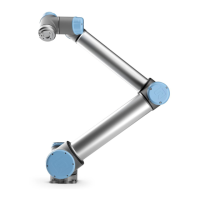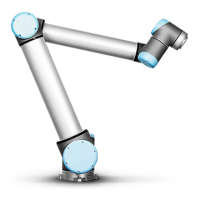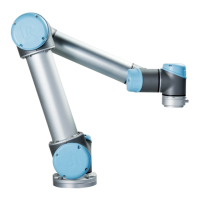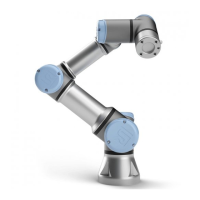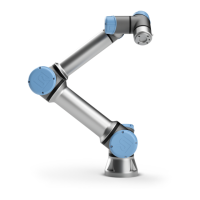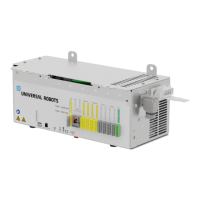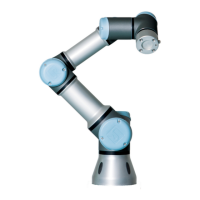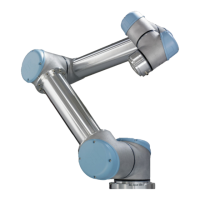•
Joint, elbow and tool/end effector position limiting: Particularly used to reduce
risks associated with certain body parts. E.g. to avoid movement towards head and
neck.
•
Tool/end effector orientation limiting: Particularly used to reduce risks associated
with certain areas and features of the tool/end effector and work-piece. E.g. to avoid
sharp edges to be pointed towards the operator.
•
Speed limitation: Particularly used to ensure a low speed of the robot arm.
Unauthorized access to the safety configuration must be prevented by enabling and setting
password protection during the integration.
WARNING
Failure to conduct a collaborative application risk assessment can increase
hazards.
•
Always conduct a collaborative application risk assessment for
intentional collisions and/or collisions due to reasonably foreseeable
misuse.
•
The collaborative application shall address:
•
Severity of individual potential collisions.
•
Likeliness of occurrence of individual potential collisions.
•
Possibility to avoid individual potential collisions.
If the robot is installed in a non-collaborative robot application where hazards cannot be
reasonably eliminated or risks cannot be sufficiently reduced by use of the built-in safety-
related functions (e.g.when using a hazardous tool/end effector), then the risk assessment
conducted by the integrator must conclude the need for additional protective measures
(e.g.an enabling device to protect the operator during set-up and programming).
Universal Robots identifies the potential significant hazards listed below as hazards that
must be considered by the integrator. Other significant hazards can be present in a specific
robot installation.
1. Penetration of skin by sharp edges and sharp points on tool/end effector or tool/end
effector connector.
2. Penetration of skin by sharp edges and sharp points on obstacles near the robot
track.
3. Bruising due to contact with the robot.
4. Sprain or bone fracture due to strokes between a heavy payload and a hard surface.
5. Consequences due to loose bolts that hold the robot arm or tool/end effector.
UR16e 20 User Manual
2.Part I Hardware Installation Manual
Copyright © 2009–2024 by UniversalRobotsA/S. All rights reserved.

